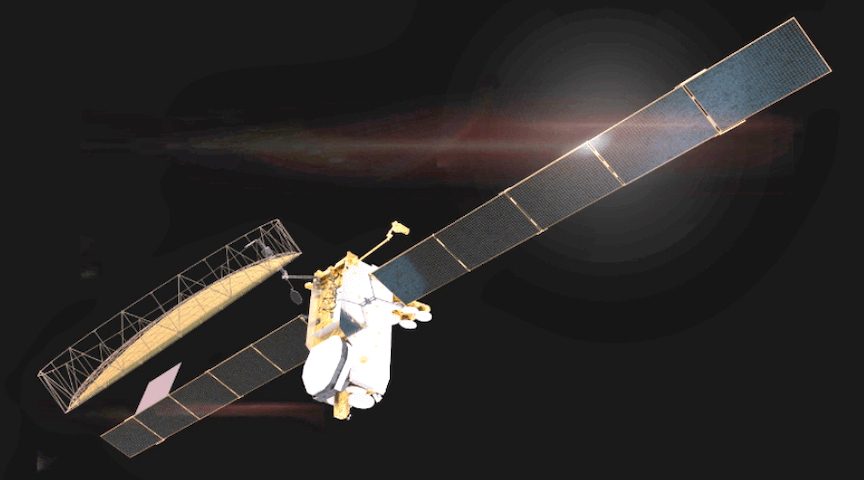
Inmarsat’s Second 1-6 F2 Satellite Enters Thermal Vacuum Testing (Image Credit: Sat News)

This revolutionary layered approach is designed to meet the accelerating bandwidth requirements of more diverse, demanding and ever more widely adopted applications in the commercial and government mobility markets.
Inmarsat’s second groundbreaking I-6 satellite (I-6 F2) — which is approximately the size of a double-decker bus, and the wingspan larger than a commercial plane — is entering thermal vacuum testing.
Constructed on UK soil in Stevenage and Portsmouth by Airbus Defence and Space, Inmarsat I-6 F2 is a leading example of British innovation — the second in a series of the most sophisticated commercial communications satellites.

In the process of thermal vacuum testing, the geostationary satellite will face hostile temperature conditions, ranging from one extreme (-173 Celsius) to another (120 Celsius) — ensuring it is fully prepared for space launch.
The I-6s are Inmarsat’s first dual band satellites, carrying both ELERA (L-band) and Global Xpress (GX – Ka-band) payloads. The Inmarsat 6 series of satellites will play a crucial role in the ongoing growth of the company’s unique ORCHESTRA dynamic mesh network.
This revolutionary layered approach is designed to meet the accelerating bandwidth requirements of more diverse, demanding and ever more widely adopted applications in the commercial and government mobility markets. By drawing on the unique capabilities of each component, it will deliver high performance connectivity everywhere, while eliminating the longstanding industry-wide challenge of congestion at high demand hot spots, like busy ports, airports, sea canals and flight corridors, for good.
ORCHESTRA’s unprecedented combination of global coverage, unparalleled capacity and resilience will provide customers with a low-risk transition to next generation service capabilities, enabling new business models and use cases well into the future. For example:
- Urban Air Mobility: Complete command and control and secure air traffic management capabilities for the safe operation of autonomous flying taxis and personal air transport.
- Industrial IoT: Secure, device-neutral, private networks for large scale IoT deployments that can integrate, manage and monitor disparate sensors and devices via a single cloud environment.
- Smart Cruise Ships: High speed, low latency passenger, crew and operational connectivity solutions for ferries and cruise ships, enabled through global satcom and on-board 5G networks.
- Tactical Private Networks: Bespoke, high-speed, local area, temporary ‘sovereign’ networks to connect international aid, forces or government agencies in the field while securely relaying critical data home for analysis.





